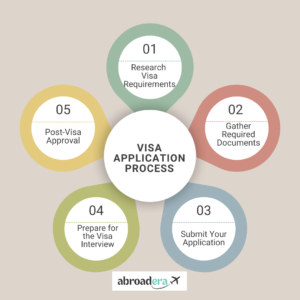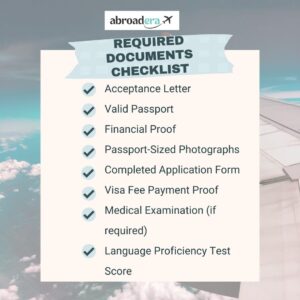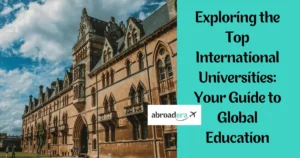Study abroad is a dream for many students, offering a unique opportunity to experience new cultures, receive a world-class education, and enhance career prospects. However, the process of obtaining a student visa can be challenging. This comprehensive guide aims to simplify the student visa process with practical tips and tricks to help you secure your visa and embark on your international academic journey.
Understanding Student Visas
A student visa is an official document issued by a country’s immigration authority, allowing international students to enter and study in that country for a specified period. Each country has its own set of visa requirements, procedures, and regulations, which can vary widely. Here’s a step-by-step guide to help you understand the process.

Step 1: Research Visa Requirements
The first step in securing a student visa is to research the specific requirements of the country where you plan to study. Here are some key aspects to consider:
- Types of Student Visas: Different countries offer various types of student visas based on the duration and level of study. For example, the US offers DS-160, F-1 visas for academic students and M-1 visas for vocational students.
- Eligibility Criteria: Understand the eligibility criteria, including proof of acceptance from an educational institution, financial stability, and language proficiency.
- Application Process: Familiarize yourself with the application process, including required documents, application forms, and submission procedures.
- Processing Time: Check the average processing time for student visas in your chosen country to plan your application timeline accordingly.
Step 2: Gather Required Documents
Once you understand the visa requirements, the next step is to gather the necessary documents. While the specific documents may vary by country, here are some commonly required documents:
- Acceptance Letter: An official acceptance letter from a recognized educational institution in the host country.
- Passport: A valid passport with a minimum of six months validity beyond your intended stay.
- Financial Proof: Evidence of sufficient funds to cover tuition fees, living expenses, and other costs. This can include bank statements, scholarship letters, or sponsorship documents.
- Passport-Sized Photographs: Recent passport-sized photographs that meet the specifications of the host country’s immigration authorities.
- Completed Application Form: A duly filled and signed visa application(you can apply visa application online also) form.
- Visa Fee Payment: Proof of payment of the visa application fee.
- Medical Examination: Some countries require a medical examination or proof of vaccinations.
- Language Proficiency Test Scores: Results of standardized language tests like IELTS, TOEFL, or equivalent, if required.
Step 3: Submit Your Application
With all the necessary documents in hand, it’s time to submit your visa application. Here are some tips to ensure a smooth submission process:
- Apply Early: Start the visa application process well in advance to avoid last-minute hassles and delays.
- Follow Instructions: Carefully follow the instructions provided by the host country’s consulate or embassy. Incomplete or incorrect applications can lead to delays or rejections.
- Online vs. In-Person: Determine whether you need to submit your visa application online or in-person at the consulate or embassy.
- Double-Check Documents: Ensure all required documents are included and accurately filled out. Missing documents can delay the processing of your visa.
Step 4: Prepare for the Visa Interview
Some countries require a visa interview as part of the application process. Here are some tips to help you prepare:
- Know Your Course and Institution: Be prepared to discuss your chosen course of study, why you selected it, and why you chose that particular institution.
- Financial Stability: Be ready to demonstrate your financial stability and ability to support yourself during your stay.
- Intentions to Return: Many countries require proof that you intend to return to your home country after completing your studies. Be prepared to discuss your long-term plans.
- Practice Common Questions: Practice answering common interview questions confidently and honestly.
- Dress Professionally: Dress appropriately for the interview to make a good impression.
Step 5: Post-Visa Approval
Once your student visa is approved, there are a few more steps to take before you can embark on your journey:
- Check Visa Details: Carefully check the details on your visa to ensure they are correct, including your name, date of birth, and duration of stay.
- Book Your Travel: Make travel arrangements, including flights and accommodation, well in advance.
- Pre-Departure Preparation: Prepare for your departure by packing appropriately, arranging transportation, and gathering essential documents.
- Health Insurance: Ensure you have adequate health insurance coverage for your stay abroad. Some countries require proof of health insurance as part of the visa process.
- Attend Orientation Programs: Many institutions offer orientation programs for international students. These programs can help you acclimate to your new environment and provide valuable information about the campus and local area.
If you want to know about how international scholarships can make your study abroad journey easier as well read here
Tips and Tricks for a Successful Visa Application

Here are some additional tips and tricks to help ensure a smooth and successful student visa application process:
- Stay Organized: Keep all your documents organized and easily accessible. Use a checklist to ensure you have all required documents.
- Seek Assistance: Don’t hesitate to seek assistance from your educational institution’s international student office or a visa consultant if you have questions or need guidance.
- Be Honest: Provide accurate and truthful information on your application and during your interview. Any discrepancies can lead to delays or rejection.
- Stay Informed: Keep yourself updated on any changes in visa regulations or requirements for your chosen country.
- Maintain Communication: Maintain open communication with the consulate or embassy handling your application. Respond promptly to any requests for additional information or documents.
- Financial Planning: Plan your finances carefully and ensure you have sufficient funds to cover your entire stay. Financial stability is a crucial aspect of the visa application process.
- Language Proficiency: If required, prepare thoroughly for language proficiency tests. Good scores can significantly enhance your application.
- Be Patient: The visa application process can be lengthy and stressful. Stay patient and follow up regularly without being overly persistent.

Conclusion
Securing a student visa is a crucial step in your journey to study abroad. While the process can be complex and time-consuming, thorough preparation, organization, and understanding of the requirements can significantly increase your chances of success. By following this ultimate guide and implementing the tips and tricks provided, you can navigate the student visa process with confidence and embark on an exciting academic adventure in a new country. Good luck!







